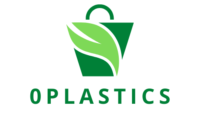As the global movement towards sustainability gains momentum, plastic-free marketplaces are at the forefront, offering consumers eco-friendly alternatives and driving positive change. Scaling sustainability within the framework of a plastic-free marketplace presents both opportunities and challenges. This article explores valuable lessons learned from growing a plastic-free marketplace, shedding light on the strategies that contribute to success in the pursuit of a greener and more sustainable future.
1. Customer-Centric Approach:
A customer-centric approach is foundational to the success of a plastic-free marketplace. Understanding the evolving needs and preferences of eco-conscious consumers is essential. Regularly soliciting feedback, conducting surveys, and actively engaging with the community helps tailor the marketplace’s offerings to meet and exceed customer expectations.
2. Diverse and Curated Product Range:
Curating a diverse and appealing range of plastic-free products is crucial for attracting and retaining customers. The marketplace should feature a well-balanced assortment, including everyday essentials, lifestyle products, and innovative sustainable solutions. Diversity ensures that the marketplace remains relevant to a broad audience with varying sustainability needs.
3. Transparency in Sourcing and Practices:
Transparency builds trust, and in the realm of sustainability, it is paramount. Clearly communicating the sourcing practices, production methods, and environmental impact of products fosters transparency. Consumers increasingly value authenticity, and a commitment to openness about the supply chain enhances the marketplace’s credibility.
4. Educational Initiatives:
An educated consumer base is an empowered one. Plastic-free marketplaces play a pivotal role in educating consumers about the environmental impact of plastic and the benefits of sustainable living. Integrating educational content, guides, and resources into the platform creates an informed community committed to making eco-conscious choices.
5. Collaboration with Sustainable Brands:
Building strong partnerships with sustainable brands is mutually beneficial. Collaborating with brands that share the marketplace’s values strengthens the overall ecosystem. These partnerships contribute to a diverse product range, bring innovation to the forefront, and enhance the marketplace’s reputation as a trusted platform for eco-friendly products.
6. Adaptability to Changing Trends:
The landscape of sustainability is dynamic, with trends evolving rapidly. Successful plastic-free marketplaces remain adaptable and agile in response to changing consumer preferences and emerging eco-friendly innovations. Staying ahead of trends ensures the marketplace continues to be a relevant and influential player in the sustainable living space.
7. Incorporating Technology for Convenience:
Leveraging technology enhances the convenience and accessibility of a plastic-free marketplace. Seamless online experiences, user-friendly interfaces, and mobile applications contribute to a positive customer journey. Embracing technology also enables the marketplace to efficiently manage inventory, track sustainability metrics, and implement innovative features like virtual try-ons.
8. Strategic Marketing for Impact:
Effective marketing is essential for raising awareness and driving adoption. Strategic marketing campaigns should emphasize the positive impact of choosing plastic-free alternatives. Highlighting success stories, showcasing the environmental benefits, and aligning with broader sustainability movements contribute to the marketplace’s influence and reach.
9. Continuous Innovation:
Innovation is a cornerstone of scaling sustainability. Staying at the forefront of sustainable product offerings requires a commitment to continuous innovation. Exploring new materials, supporting research and development initiatives, and showcasing cutting-edge solutions keep the marketplace dynamic and aligns it with the evolving landscape of eco-friendly products.
10. Community Engagement:
Fostering a sense of community is instrumental in scaling sustainability. Engaging with consumers through social media, forums, and events creates a shared space for eco-conscious individuals. Building a community around the marketplace not only enhances brand loyalty but also encourages collective action towards a more sustainable lifestyle.
In conclusion, scaling sustainability within a plastic-free marketplace is an intricate but rewarding journey. By prioritizing a customer-centric approach, curating a diverse product range, ensuring transparency, promoting education, collaborating with sustainable brands, embracing technology, strategic marketing, continuous innovation, and community engagement, a plastic-free marketplace can not only thrive but also contribute significantly to the global movement towards a greener and more sustainable future. The lessons learned from growing a plastic-free marketplace serve as valuable insights for businesses committed to making a positive environmental impact.
